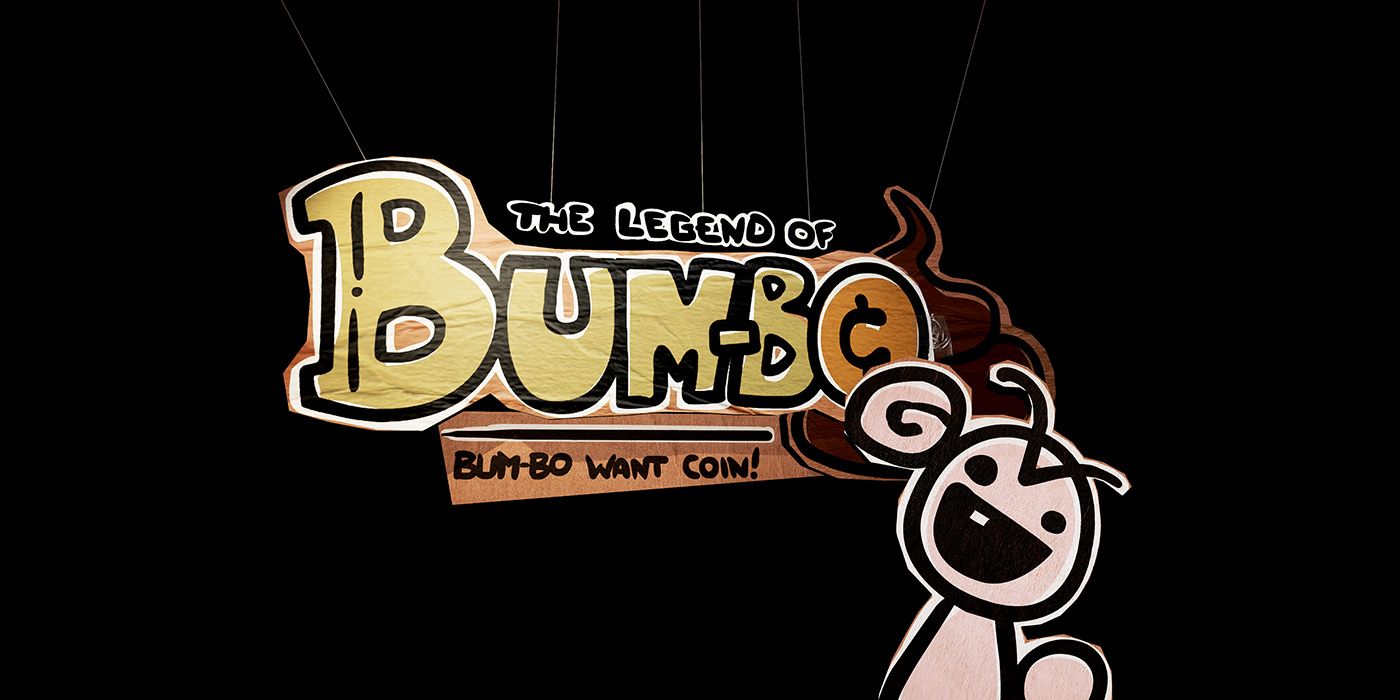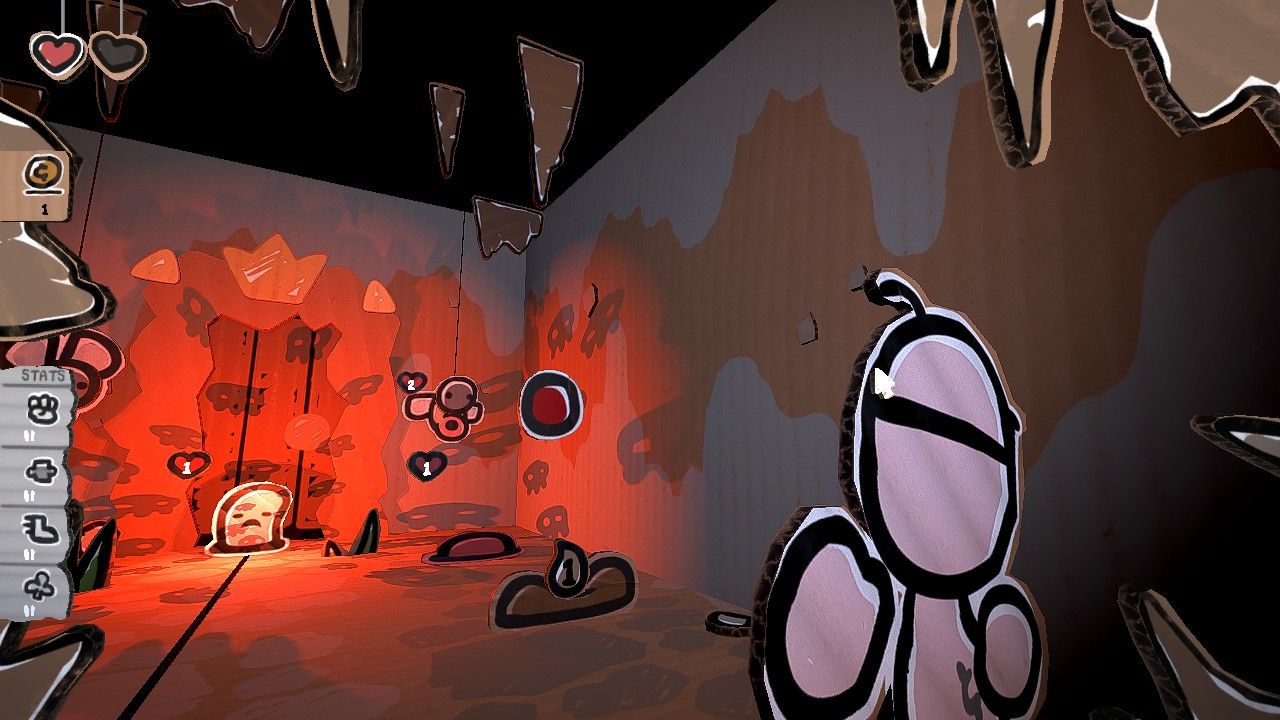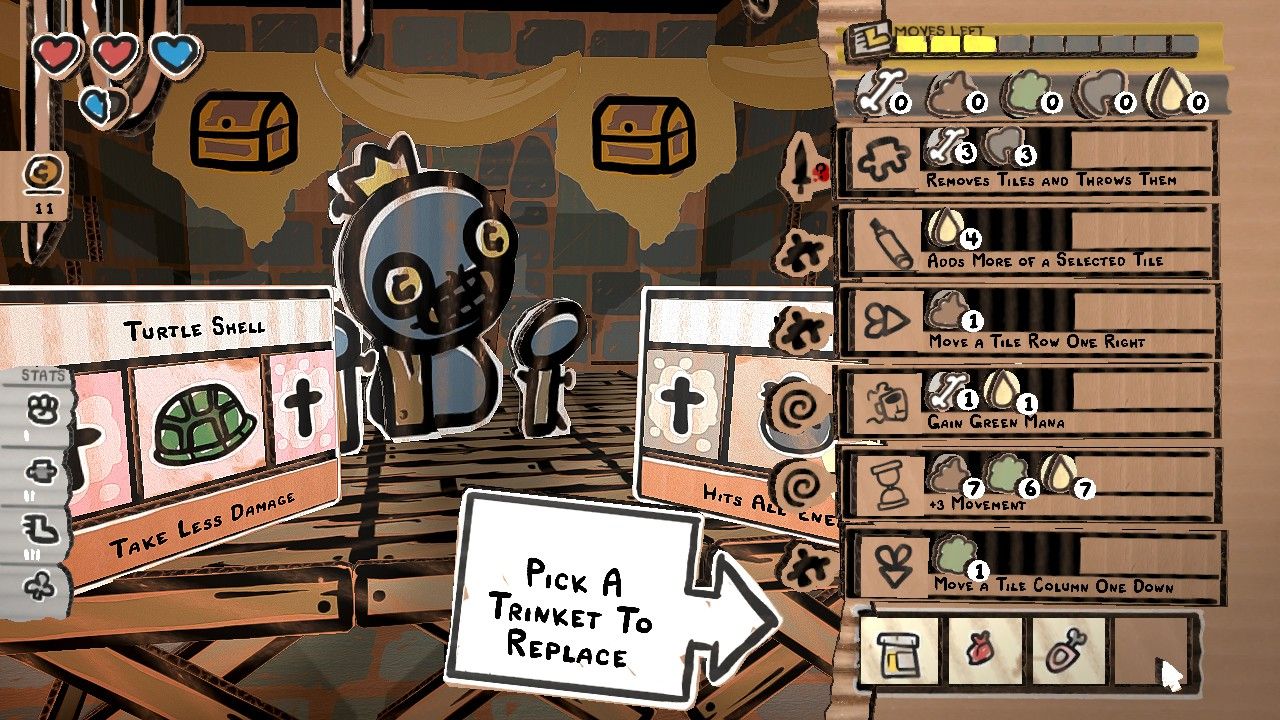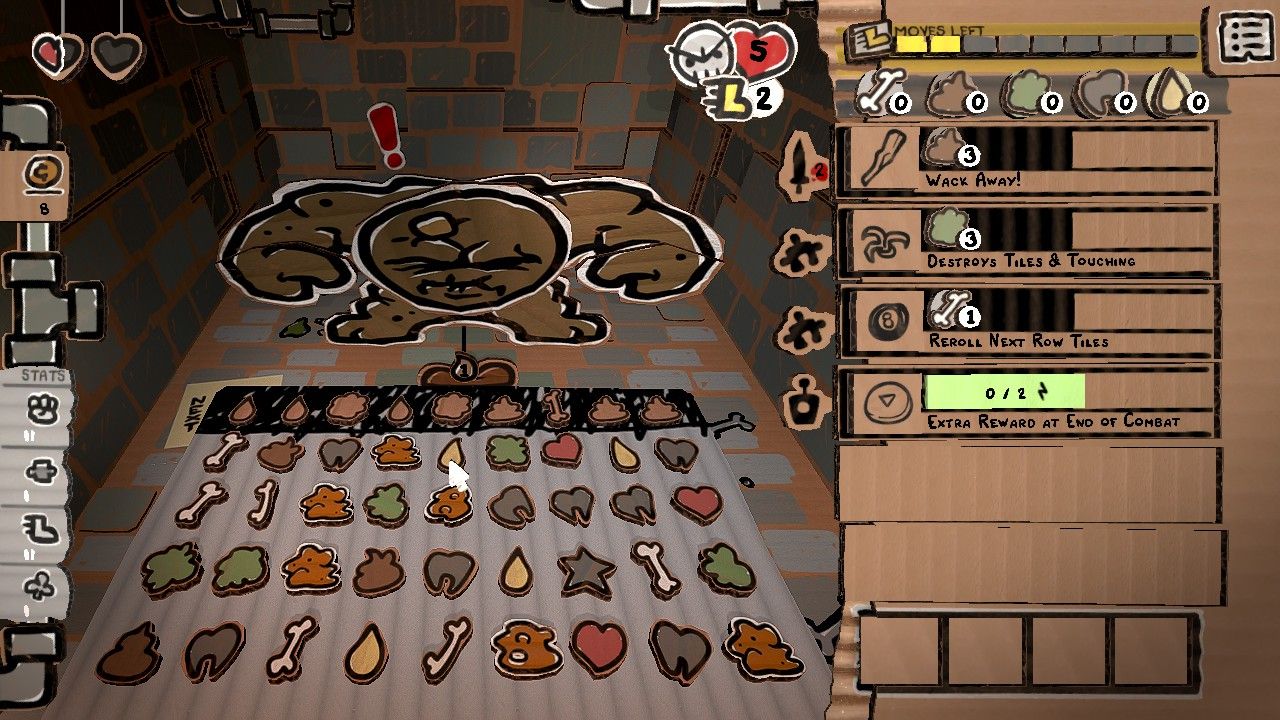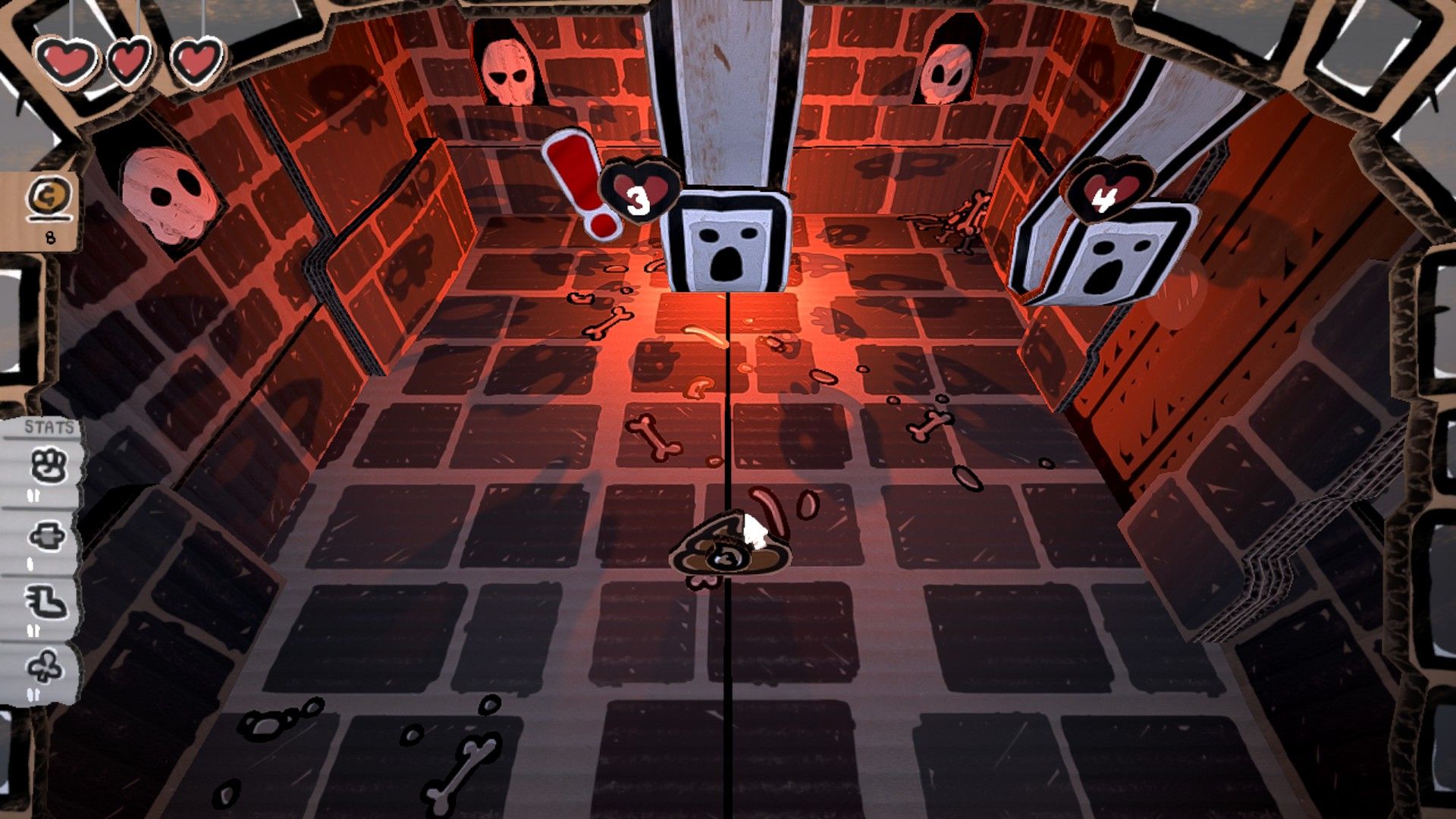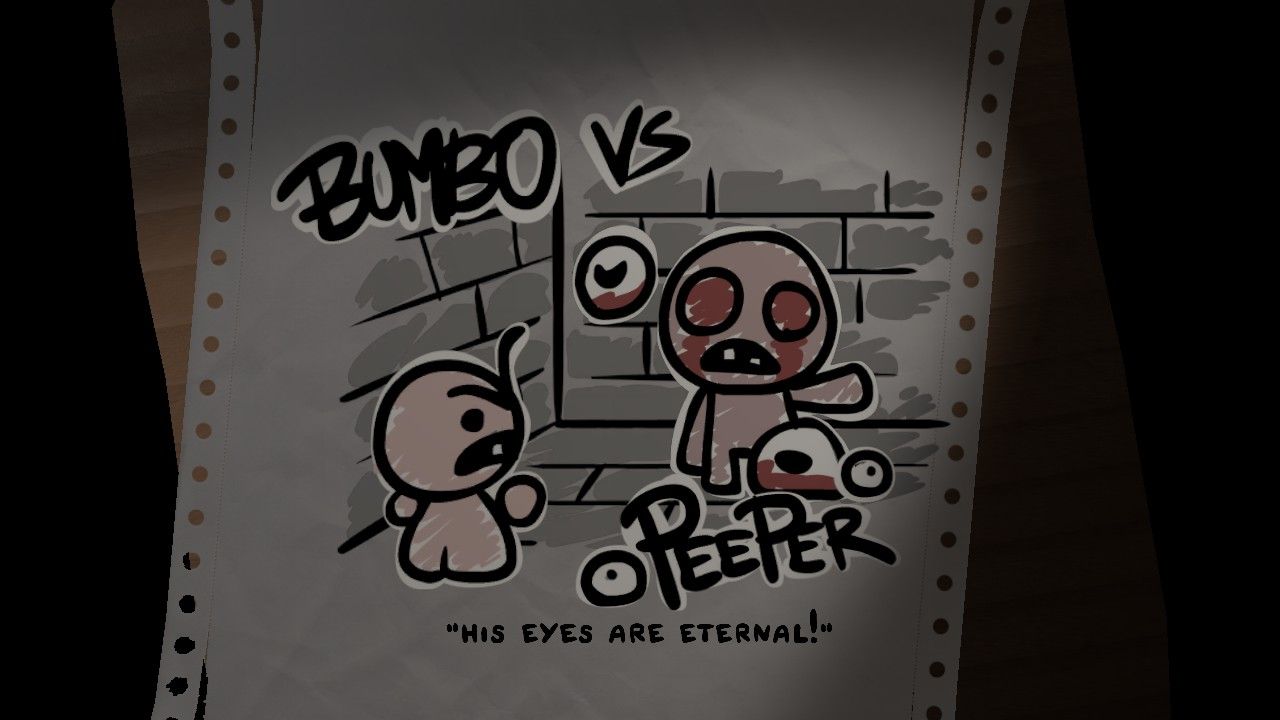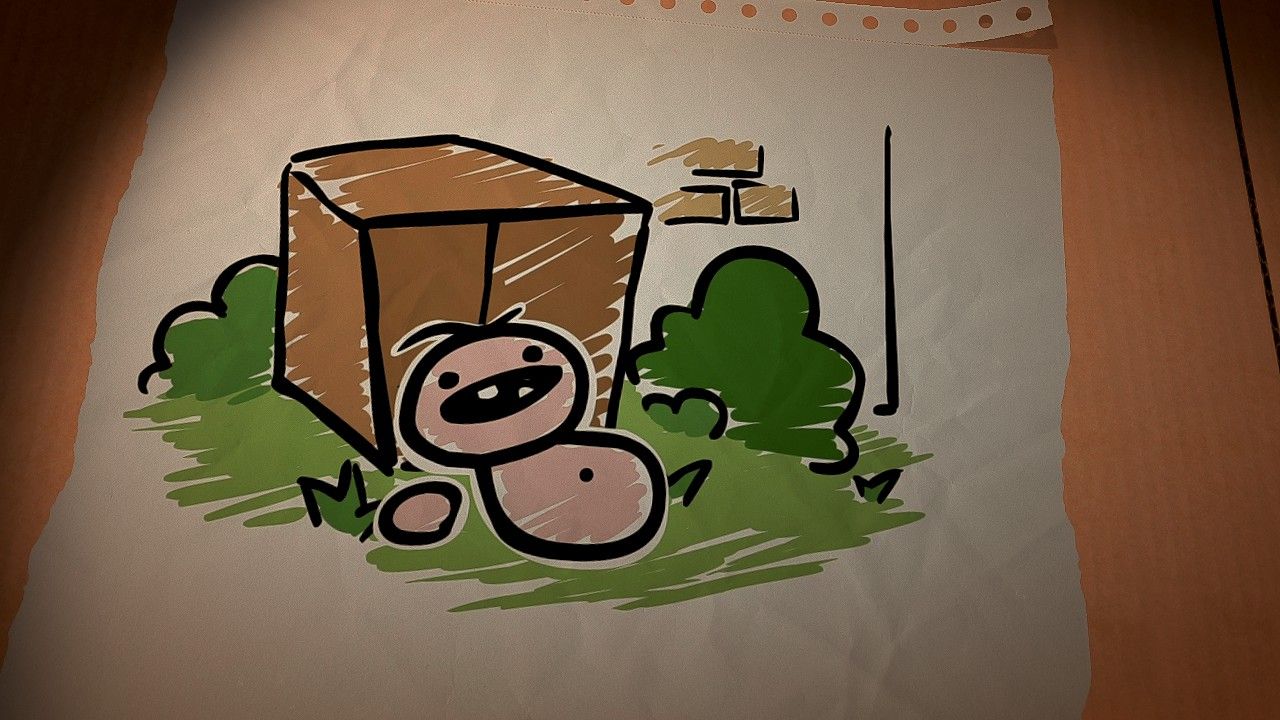The Legend of Bum-Bo is an addictive mash up of tile-matching puzzlers and roguelikes, with a tactile DIY visual design that serves the concept.
The rumors were true: Ed McMillen, artist and designer behind such wonderfully scatological indie hits as Super Meat Boy and The Binding of Isaac, was really working on a puzzle game this whole time. From its ignoble launch-day bug-tormented theatrics to its present stable version, The Legend of Bum-Bo manifested on the Steam store last week as a deceptively deep match-4 tile puzzler in a turn-based RPG wrapping. For any gamers who’ve somehow missed the McMillen train thus far, his newest is an oddball introduction to the grossly adorable (but always thoughtful and sincere) aesthetic he’s made his own, but it’s still an engrossing head-scratcher time-sink begging to be played and re-played. The question remains, however: what will this game look like in another six months?
Billed as the direct prequel to Isaac, The Legend of Bum-Bo similarly begins with an animated refrigerator-art-styled cartoon playing out to tinkling music boxes and a darkly whimsical narrator. You are introduced to Bum-Bo, a grumpy but peaceful vagrant whose Gollum-esque obsession with “coin” is interrupted when it is promptly stolen by shadowy ne’er-do-wells. Chasing them into the sewers, Bum-Bo battles these naves in pursuit of his precious, delving deeper and deeper into a cardboard box labyrinth.
While the connections the game forges to the (at this point) considerably elaborate and esoteric Isaac lore are a surprise not to be spoiled, the iconography of the game will prove immediately familiar to fans of McMillen’s monolithic roguelike masterpiece. Identical trinkets, tarot cards, and many other Isaac totems all make appearances, along with a few new ones—to be perfectly honest, it’s surprising that there aren’t that many new items and tools, even though their application in Bum-Bo are functionally different as a matter of course.
The most apparent deviation here is the cardboard fantasy design aesthetic, a visual presentation that is equal parts delightful and distracting. Essentially, Bum-Bo’s world all looks like it’s been painted and/or hastily glued onto crudely scissored bits of cardboard, from the tiles on the playing field to the level geometry, menu, and characters themselves. Traveling to each new area is preempted by a popsicle-stick avatar bopping across the screen on their woeful journey and, outside of the cartoon interludes, actions are more physically mimed than animated frame by frame. It’s all clearly meant to evoke a kind of scrappy fantasy theater powered by a child’s lonely imagination and artistic devotion, but it’s also something of a technical marvel. There are so many conceivable ways that this aesthetic could have been presented in a cheap or ghastly manner, but the physicality of it works, with bosses and enemies looking like charming and/or disgusting paper monstrosities with working joints. It’s an intimately vital aspect of the experience which might have ruined the package if it didn’t look so slick.
Now, visuals alone do not an effective puzzler make, and The Legend of Bum-Bo’s mechanics definitely refer to the Bejeweleds and Candy Crushes of our day, but also with their own meaningful elaborations on that formula. On a 10x4 grid, players slide rows and columns to make 4+ matches of boogers, pee drops, poop piles, bones, and teeth, along with wilds and other special tiles. The strange dimensions of the grid mean that vertical matches always cap at four, with lateral lines having greater match potential (matches of 6+ tiles prompt unique special effects, depending on the type). Alternately, vertical matches can trigger layered combos through smart utilization of the “coming-next” row, along with outright luck.
This only represents one side of the Bum-Bo coin, though. The other involves careful usage of puzzle-activated projectiles, specific spells, and rechargeable items in tandem with the unpredictable puzzle board to damage and defeat foes in each encounter. Matches provide colored mana which can be used to activate an array of spells, and theorizing the best match/spell combo rhythms to address the specific enemies before you takes trial and error to master.
There’s an interesting ecosystem of those enemies, who mostly start out as cannon fodder but eventually evolve defenses and counters to trip up your trusted go-to routines. For instance, some enemies explode on death, which mean that they should be batted away before being dispatched or separated by the defensive shielding aspect of your poop (an absurd sentence, but accurate). Others only receive damage from either puzzle-based damage or spells, which may turn an otherwise successful six-tile match into a dud play.
A series of characters can be unlocked with different stats and strats, and individual builds develop on-the-fly as you obtain new spells and trinkets, giving the game that Slay the Spire, just-one-more-run-to-see-what-happens-this-time appeal. When you combine the random drops with the individual starting characters over several games, Bum-Bo’s differentiated re-play potential blooms out from the cardboard fracas. This means that even those normally turned off to this type of puzzle game may yet find a handhold, and the rhythms of the game are remarkably adept at stabbing its paper hooks in you. RNG can outright gut a given run, yet you’ll also encounter shining moments where you’re dancing in the fire, a half-heart of health standing between you and a restart. Advanced stages of play offer that satisfying feeling of teetering on the brink of failure if not for carefully planning a few moves ahead. Additionally, there’s never any pesky timer ticking down to prompt hasty actions, and the finely tuned complexity ultimately makes the game feel much more like brainy chess than checkers.
And now we arrive to the elephant in the room: The Legend of Bum-Bo was buggy. Launch-day bugs were, of course, memorably tragic, including soft-locks, freezes, abilities not working, trinkets breaking the game and forcing a restart, and more. Day-one fans of Super Meat Boy will recall a few Xbox Live shenanigans during that particular launch (especially glitched leaderboards), or The Binding of Isaac’s original Adobe Flash patchwork crudeness. Bum-Bo’s issues eclipsed these handily, and though our current review copy is now marked as v1.0.6, the road to this state was strewn with complaint debris.
Some have pointed to the finished game as existing in a state that is recognizable as Early Access, which is a reasonable critique. Even the barest quality-of-life components like a save-and-exit feature or a functional options menu are still nowhere to be found a week after Bum-Bo went on sale [update: sound options are now available]. Development drama (including a natural disaster setting the team back with weeks of completed work lost) are perhaps to blame, but it’s no mistake that a distinct blemish was smeared across Bum-Bo’s already fetid collection of bodily functions.
Just like Isaac, runs can last mere minutes (if you fare badly) or well over an hour with competent play. Losing progress from a bug or error on one of these latter runs was utterly demoralizing, and undoubtedly resulted in at least a few disappointed refunds. It’s testament to the rapturous nature of the game that many players kept on restarting in spite of these stumbles. That’s because the core systems and game-feel are involved and alluring, and dreaming up infinite-move strategies and weird approaches to a build continues to compel 20 and 30 hours in, just like the finest deck-builders. That being said, nothing in The Legend of Bum-Bo feels quite as expansive and thrilling as even vanilla-level Isaac and, unlockable characters and trinkets aside, the game is much more straightforward, seemingly shallower, and possibly more limited in its depth and mystery.
There is something to be said about completely transforming the mechanics of one game to serve its companion piece...and, more importantly, doing so successfully. The Legend of Bum-Bo’s puzzle-game magic may entice the Candy Crush-scorners (or reward unrepentant fans of tile-matching games), and it’s melange of gameplay styles is blended with care. Still, its avoidance of twitch reflexes makes the experience seem somewhat sedate. There’s no equivalent here to finding Brimstone and Tammy’s Head in Isaac for the first time and just clearing room after room with glee.
Ridiculon returns to helm the music, a series of looping macabre instrumental tracks that do eventually start to grate—it's less the fault of the composer, more just a matter of dozens of hours sitting with the same tracks. There are also copious farting and moaning sound effects which align with the character of the game, but they can grow equally tiresome. None of the audio seems crucial to effective play, but it strays close enough to Isaac to feel warmly nostalgic, and certain motifs from Rebirth make a return as well.
As it stands, Bum-Bo’s two-man development team seem committed to the long haul, pledging to tweak and add content (and bug fixes) to the game in the coming weeks and months, and its low $15 price tag may lead to a stretchier and weirder experience eventually, just like Isaac. Even in its wild-west days, that was a game that visibly changed the landscape for action roguelikes, whereas The Legend of Bum-Bo’s targets seem much more modest. It’s not the Isaac follow-up we wanted, or deserved, but it definitely feels like the one Ed and James wanted to make, with minimal compromise. It’s an intriguing and fun puzzler mashup with easter eggs and callbacks to serve the horde of Isaac fans raving in the stands, and maybe that’s enough.
The Legend of Bum-Bo is out now on Steam for PC. A digital copy was provided to Screen Rant for purposes of review.

